Published December 11, 2023
-
12 mins read
The Essential Guide to Advisory Board Meetings

Shaimaa Badawi
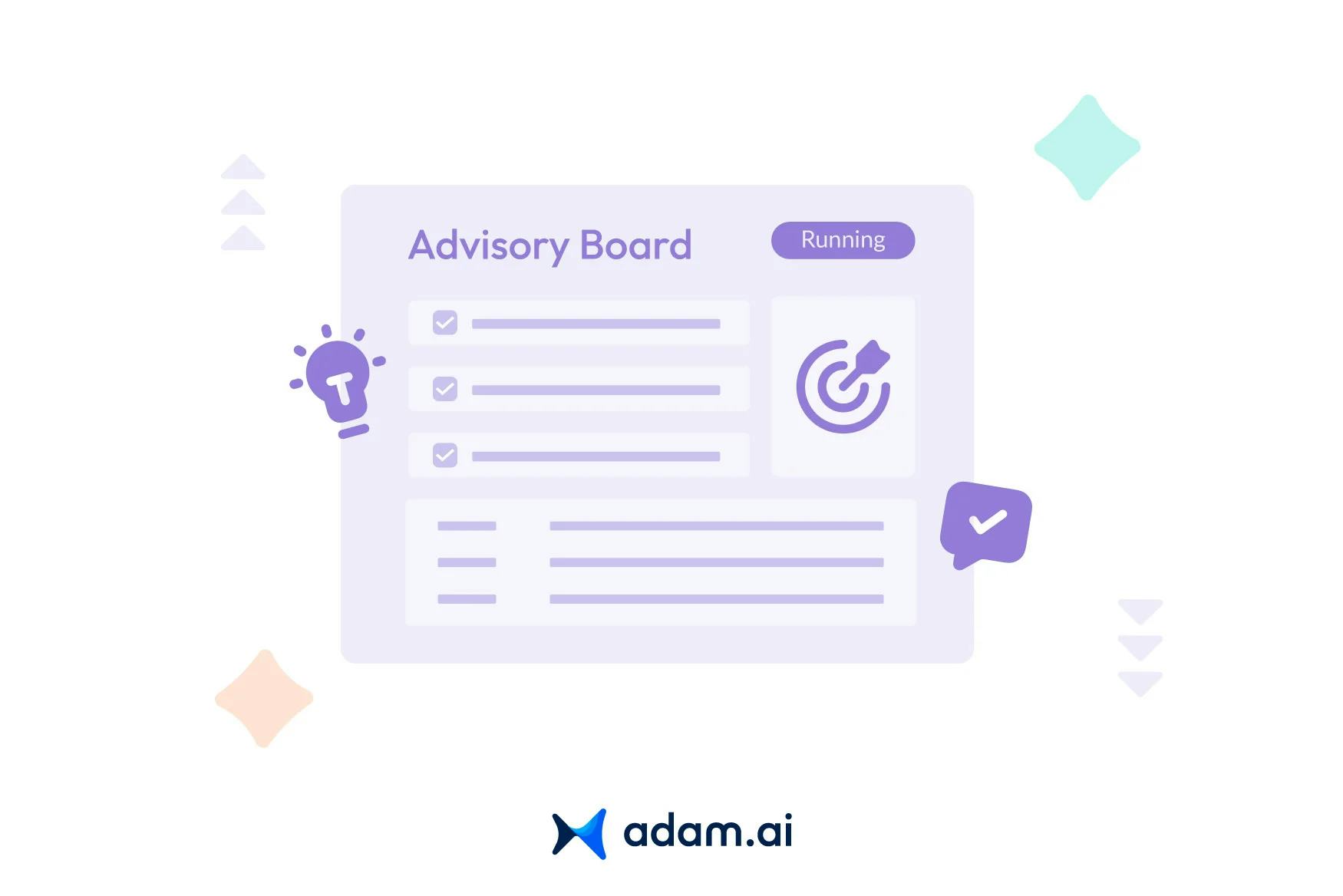
The role of advisory board meetings has become a key element for organizations striving to enhance their strategic capabilities.
These meetings, pivotal in the function of an advisory board, offer a platform for external expertise and insights, distinct from the traditional board of directors.
Focusing on the strategic significance of advisory board meetings, this article explores their structure, purpose, and tips on how to run them effectively.
What is advisory board meeting?
An advisory board meeting is a collaborative and structured gathering where an organization engages with a group of advisors and stakeholders to seek expert guidance and insights.
This strategic tool for organizations leverages external expertise and guidance, aiding in growth, innovation, and the achievement of organizational goals without the legal and financial obligations typically associated with a full board of directors.
What is an advisory board structure?
An advisory board is typically composed of three to five members of a carefully selected group of advisors chosen for their expertise in relevant fields. This size is considered optimal because it strikes a balance between having a diverse range of perspectives and maintaining an efficient, manageable group dynamic.
The structure of an advisory board typically comprises three key roles: a chair, external advisors, and internal representatives such as directors or stakeholders of the organization.
Unlike a traditional board of directors, where roles like chair, president, or vice president delineate a hierarchy, an advisory board operates on a basis of equality among its members. Each member possesses an equal rank and voice, contributing to a collaborative environment where diverse opinions and expertise are equally valued and considered.
Diversity in the advisory board's composition is essential, including varying genders, cultures, ethnicities, ages, and professional backgrounds. This diversity ensures that decisions are made with a comprehensive understanding of different viewpoints and experiences.
What is the role of the advisory board in a company?
The primary role of advisory board members is to offer objective advice and mentorship, aiding the organization in strategic decision-making and long-term planning. Meetings are conducted on a structured schedule, with a clear agenda and efficient communication, to ensure productive and problem-solving discussions.
Advisory boards are valuable assets for organizations ranging from startups to multinational corporations, and even government agencies. They provide a platform for testing ideas and receiving feedback from experts who offer a perspective outside the daily operational view of the organization's management. This outside perspective is crucial for addressing various challenges, understanding market conditions, and developing innovative strategies.
How often should an advisory board meet?
The frequency of advisory board meetings varies depending on the specific needs and circumstances of the organization they serve. Generally, advisory boards have a more flexible and less frequent meeting schedule compared to the board of directors.
A typical advisory board in some organizations may meet only once or twice a year. This less frequent schedule reflects the narrower scope of issues they address compared to a full board of directors. Their meetings tend to be shorter as well, focusing on specific topics or challenges the organization faces.
However, in other cases, especially for organizations undergoing significant growth and change or those in need of specialized support to complement their executive team, advisory boards might convene more frequently. For such organizations, advisory board meetings can occur four to six times per year. This increased frequency allows the advisory board to provide timely, relevant input and to closely monitor and support the organization’s development and strategic initiatives.
Is an advisory board a committee?
An advisory board can be considered a type of committee. It's a group of individuals assembled to provide expertise and advice, functioning to augment the capabilities and knowledge of an organization's board of directors.
While it doesn't have formal governance power like a board of directors, it serves a crucial role in offering guidance and making recommendations on various projects or initiatives within the organization.
What is the purpose of an advisory committee meeting?
The purpose of advisory boards is to enrich an organization with external insights and expertise, support strategic decision-making, and contribute to the overall growth and success of the organization. They offer a unique blend of mentorship, expertise, and strategic oversight without the formal governance responsibilities of a board of directors.
Here are the key functions and objectives of advisory boards:
1. Expertise and experience sharing
Advisory boards bring together individuals with a wide range of skills, knowledge, and experience that might not be present within the organization's internal team. This expertise is crucial in offering informed perspectives on various challenges and opportunities the organization faces.
2. Strategic guidance
Advisory boards play a significant role in shaping an organization’s strategic direction. They offer advice on long-term planning, market trends, business development strategies, and other key areas essential for the organization's growth and sustainability.
3. Objective outside perspective
Unlike internal teams, members of an advisory board can provide impartial and unbiased opinions. This external viewpoint is valuable for organizations to avoid echo chambers and consider different angles and approaches to their operations and strategies.
4. Networking and connections
Advisory board members often have extensive networks and can facilitate connections that might be beneficial for the organization. This can include potential partners, clients, or industry experts.
5. Mentorship and support
For organizations, especially startups or those undergoing significant transitions, advisory boards can act as mentors, offering support and advice to the leadership team. This can be particularly valuable in navigating complex business landscapes or during critical growth phases.
6. Risk management
By providing insights based on their experience and expertise, advisory board members can help organizations identify and manage potential risks before they become problematic.
7. Innovation and creativity
With diverse backgrounds and experiences, advisory board members can contribute fresh, innovative ideas and creative solutions to problems, helping organizations stay ahead in competitive and rapidly changing environments.
What are the minutes of the advisory board meeting?
Advisory board meeting minutes serve as a detailed and structured record of the proceedings and discussions that take place during a meeting. These minutes are similar to those of corporate or nonprofit board meetings in structure and content but are tailored to the specific nature and activities of the advisory board.
Here are the main agenda items for the advisory board meeting minutes.
1. Structure and content
The minutes typically begin with the name of the program or organization, the date, time, and location of the meeting, followed by a list of members present and absent, and any guests in attendance. They follow the sequence of the meeting’s agenda closely.
2. Meeting proceedings
The meeting minutes typically include a section on motions, such as the approval of previous meeting minutes, followed by various agenda items. These can range from welcoming remarks and introductions to detailed discussions on specific topics such as old business updates, current program status, new business items, and follow-up tasks. Each item is usually summarized, capturing the essence of the discussion and any decisions made.
3. Reports and updates
The minutes often contain summaries of reports presented during the meeting, such as those from the chair, president, or various committees. These summaries highlight key points and decisions without going into excessive detail.
4. Action items and follow-up
These include a record of action items or follow-up tasks assigned during the meeting, specifying the task and the individual responsible for it.
5. Adjournment
The minutes note the time of adjournment and may include the date of the next scheduled meeting.
7. Attachments and supplementary materials
Often, the minutes are accompanied by relevant attachments such as reports, enrollment data, financial updates, and other documents discussed during the meeting. These provide additional context and information for the record.
Advisory board meeting minutes are not officially recognized until they are signed and dated by the appropriate parties, such as the president, secretary, and chair/vice chair of the board. This formalizes the document as an accurate and approved record of what transpired during the meeting.
Pro tip: Use an all-in-one meeting management platform, like adam.ai, to automatically generate, approve, and share meeting minutes with advisory board members.

Screenshot from adam.ai: Meeting minutes.
Bonus. Explore adam.ai's customizable meeting templates to kickstart your meetings and adhere to timed agenda items for maximum productivity and efficient time management.
What is the difference between an advisory board and an advisory council?
The terms advisory board, advisory committee, and advisory council are used interchangeably in many organizations. While we established that an advisory board can be also referred to as a committee, an advisory council conveys an entirely different meaning.
The distinction between an advisory board and an advisory council lies primarily in their composition, function, and mode of operation.
1. Composition and size
An advisory board generally consists of industry or academic experts who provide support and guidance to a business's board or executives. These members are often seasoned professionals with extensive experience in their fields, acting as advisors.
On the other hand, an advisory council is typically larger, sometimes encompassing hundreds or even thousands of members. These members are often key clients, stakeholders, or thought leaders representative of a wider group, such as the customer or prospect base.
2. Function and influence
Members of an advisory board provide practical input and direction, focusing on steering and promoting the business. They may influence strategy and processes but do not have voting rights on decisions.
Conversely, an advisory council's primary function is to advise and influence the strategic direction of a business. They are involved in providing feedback, thought leadership, co-creation, and opinions, often contributing to the development of new products, evaluation of propositions, or assessment of services.
3. Interaction and engagement
Advisory board members usually interact more directly with the business’s board or executives, offering targeted advice based on their expertise.
In contrast, advisory council members might interact with the business in various ways, including online platforms, phone calls, or occasional face-to-face meetings. They provide a broader range of advice and feedback, often functioning as a more diverse and flexible advisory body.
4. International perspective and representation
Particularly for businesses with international operations, an advisory council is likely to include members from various geographical regions, providing a global perspective to the organization.
While both advisory boards and councils aim to support and guide a business, they differ in their member composition, the scope and method of their advice, and the way they interact with the organization. Advisory boards are more focused and expert-driven, while advisory councils encompass a broader, more diverse group providing wide-ranging feedback and insights.
Are advisory board members paid?
The compensation of advisory board members varies depending on the nature of the organization they serve.
In nonprofit organizations, advisory board members often volunteer their time and expertise without direct financial compensation. This volunteer model is common in the nonprofit sector, aligning with the organization's mission-driven approach and budget considerations. Members are usually reimbursed for any travel, lodging, or other expenses they incur while serving on the board. This approach helps to facilitate their participation without imposing a financial burden.
On the other hand, for-profit businesses generally adopt a different approach, where it's considered a standard practice to compensate advisory board members. This compensation is not just a recognition of the value and expertise the members bring but also a gesture of appreciation for their time and effort. Importantly, it's advised that all members receive equal compensation to avoid creating any sense of hierarchy or bias within the board.
In corporate settings, the compensation for advisory board members may be less than what is offered to regular board members, often ranging between a third to a half of the latter's compensation. Additionally, corporate advisory board members might receive other forms of remuneration, such as equity interests in the company.
How to run an effective advisory board meeting
To conduct an effective advisory board meeting, a combination of clear planning, efficient use of technology, and adherence to formal structures is essential.
1. Clear agenda
Establishing a clear and focused agenda is crucial. This includes specifying the meeting's location, time, duration, and topics for discussion. A well-defined agenda ensures that the meeting remains focused and productive.
2. Meeting preparation
Distributing the agenda to advisory board members well in advance (a week or even a month prior) is vital for setting expectations and allowing members to prepare adequately. This preparation maximizes the productivity of the meeting.
3. Meeting frequency
Determining an appropriate frequency for meetings is important. Advisory board members are often busy individuals, so it's essential to respect their time by making each meeting as impactful as possible. The frequency should balance the need for advice with the availability of the advisors. Additionally, keeping advisors informed about the organization's activities between meetings is important for their continued engagement and effectiveness.
4. Utilization of technology
Leveraging technology can greatly enhance the efficiency and effectiveness of advisory board meetings. This may include secure distribution of materials before the meeting, the ability to record meetings, host virtual meetings, and digitally update the advisory board on any developments. Technologies like board and meeting management software can facilitate secure collaboration, especially when advisory board members are geographically dispersed.
5. Formal documentation
Despite their informal nature compared to company boards of directors, advisory boards should operate under formal written agreements. These include charters that outline board responsibilities and logistics, and non-disclosure agreements to protect sensitive information. Consulting with a lawyer to draft these documents is recommended to ensure clarity and legal compliance.
How adam.ai can help you manage advisory board meetings
adam.ai is an all-in-one meeting management platform that allows you to capture the knowledge of advisory board meetings and empowers you to run your business through effective meetings.
Here's what you can do with adam.ai:
1. Sync all your calendars on one platform and create unlimited booking pages to show your availability and accommodate the schedules of busy advisory board members.
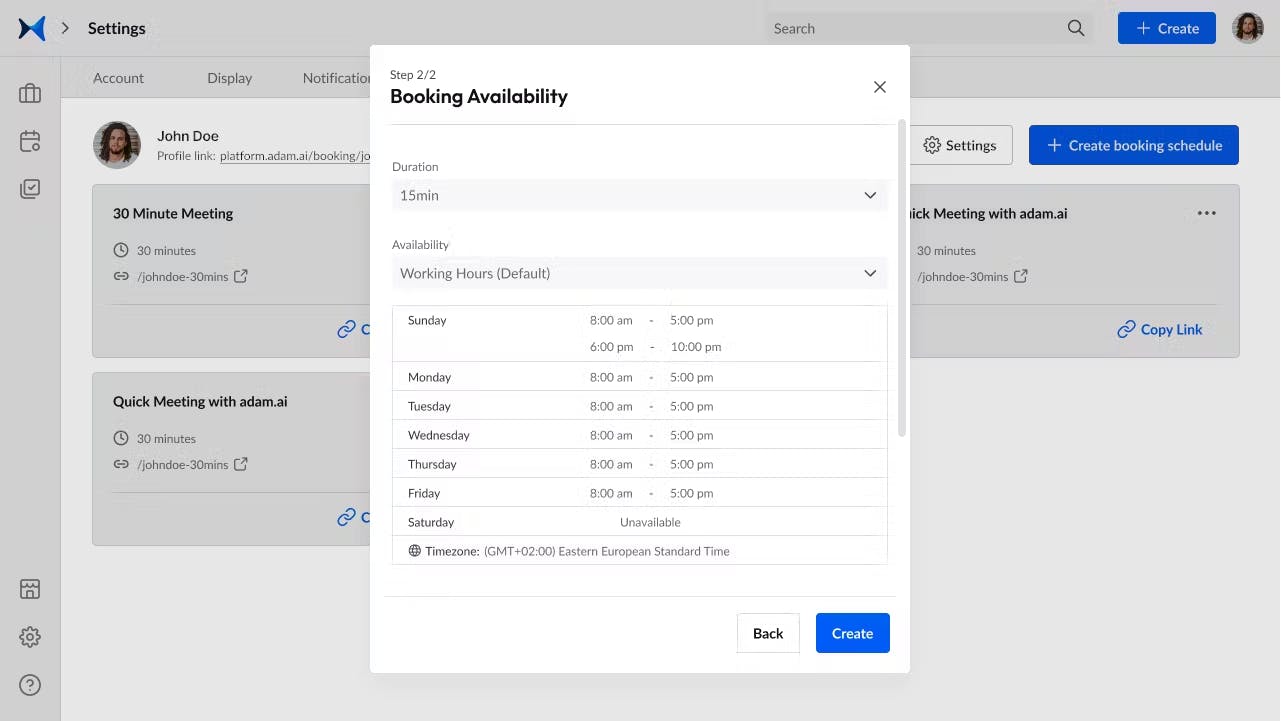
Screenshot from adam.ai: Booking pages.
2. Record agenda items, actions, polls, decisions, and notes using a smart note-taking system displayed side by side with the built-in video-conferencing feature for enhanced collaboration and productivity, with the ability to integrate with popular video-conferencing tools you're familiar with.

Screenshot from adam.ai: Video call displayed side by side with the meeting content.
3. Choose a customizable meeting agenda template from our gallery to kickstart preparation for your advisory board meetings for maximum productivity.

Screenshot from adam.ai: Meeting templates.
4. Track your actions to ensure task ownership and accountability and improve advisory board decision-making with a powerful follow-up system with the ability to search for actions across all meetings.
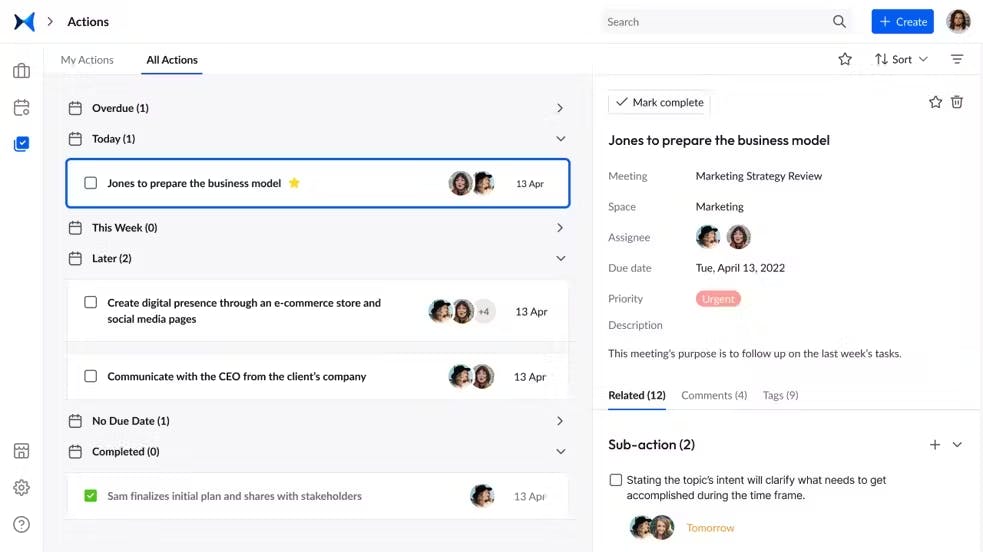
Screenshot from adam.ai: Manage actions.
5. Categorize meetings into spaces, including project, team, board, and committee, and have all their content under a specific umbrella for easy access.
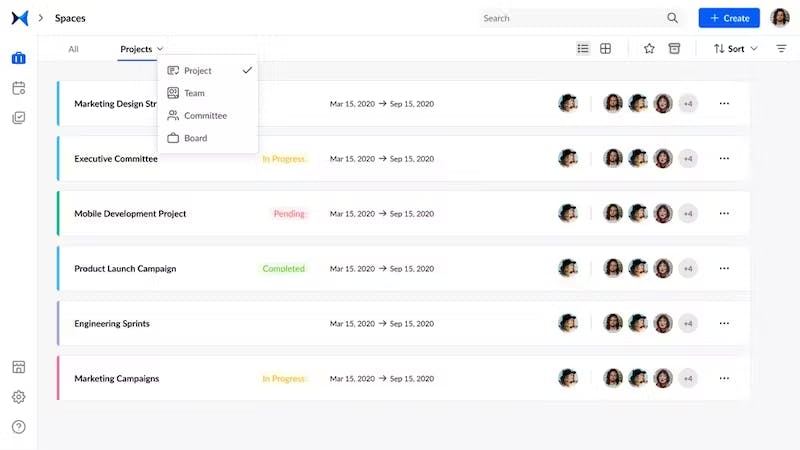
Screenshot from adam.ai: Meeting spaces.
6. Generate and share meeting minutes for due diligence in advisory board meetings.

Screenshot from adam.ai: Meeting minutes.
7. Ask Adam the AI Assistant to generate meeting transcripts, enhance your meeting content, suggest agendas, and highlight action items and key insights.
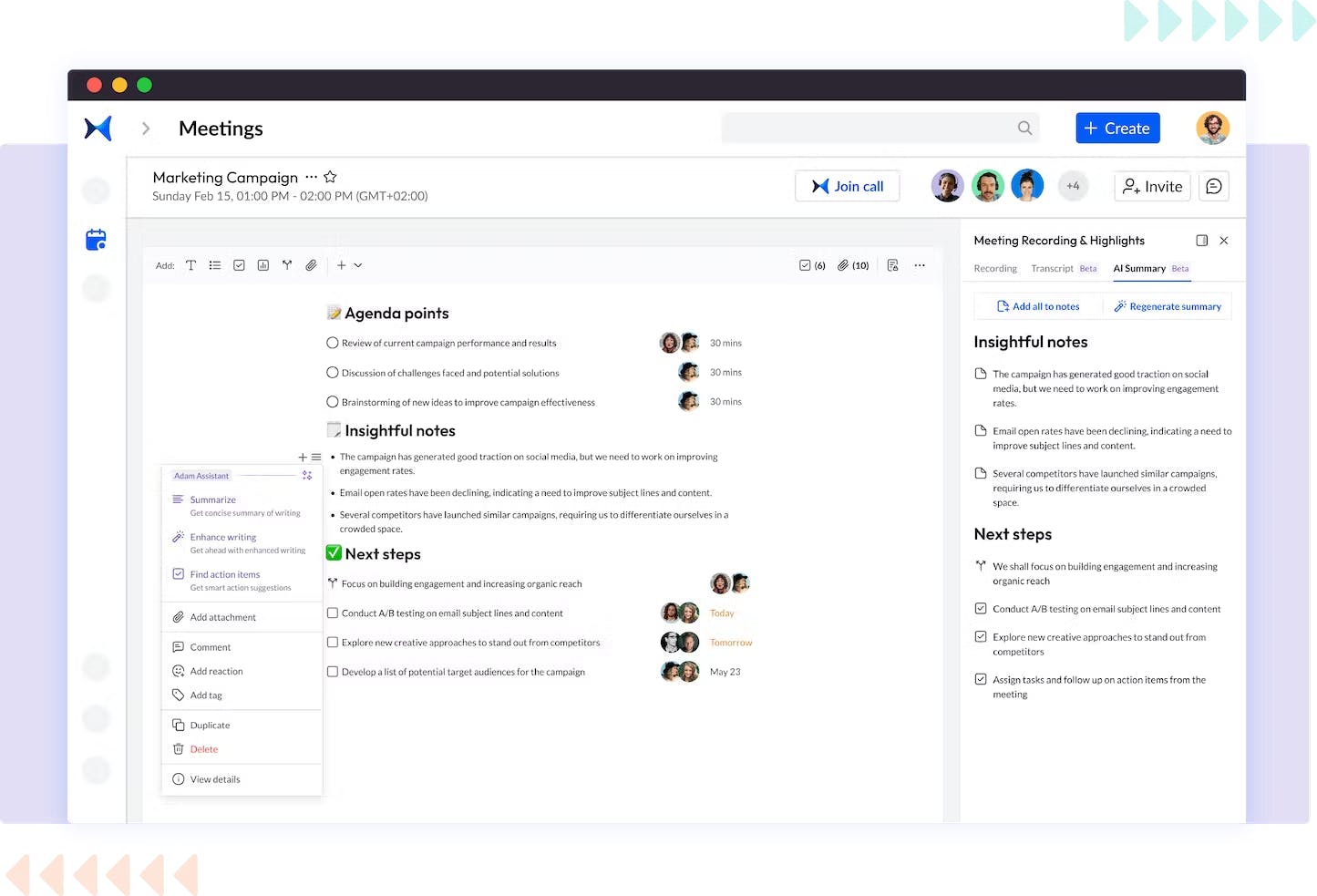
Screenshot from adam.ai: Adam the Assistant.
Get started right now to experience the true meaning of all-in-one meeting management.
The bottom line
To sum up, the efficacy of advisory board meetings is instrumental in shaping the trajectory of modern businesses.
These meetings, when leveraged effectively, bring together diverse expertise and perspectives, contributing significantly to an organization's strategic planning and decision-making processes.
We recommend using an all-in-one meeting management platform, like adam.ai, to efficiently manage the entire meeting lifecycle of advisory board meetings.
And while there may be multiple meeting management solutions available, here is why adam.ai is the all-in-one meeting management platform you can trust:
- adam.ai is one of Atlassian Ventures' portfolio companies.
- In the meeting management software category on G2, adam.ai has been ranked a leader and a high performer for successive quarters in the past years.
- adam.ai has been included in the Forrester Report in the AI-enabled meeting technology landscape.
- adam.ai is trusted and used by powerful teams and organizations worldwide for all types of critical meetings, like board, committee, project management, and business development meetings.
- And most importantly, adam.ai integrates with your existing workflow, is SOC2 compliant, provides dedicated support and success, and has a free trial option.
About the author ...
Shaimaa Badawi is an Inbound Marketing Specialist at adam.ai. Her research revolves around meeting management, project management, and board meetings, where she identifies the most daunting meeting pain points that C-level executives, board and committee members, corporate secretaries, and other professionals working in enterprises face in meetings. Based on her findings, Shaimaa provides solutions for inefficient meetings, defines various aspects of corporate-level meetings, and outlines best practices on how to run effective meetings.
Recommended for you
.png?ixlib=gatsbyFP&auto=compress%2Cformat&fit=max&q=50&w=1350&h=900)
Your Guide to a Successful Board Meeting (For Top Management)
Read now

Why Board Management Software Is Essential for Successful Managers
Read now

Is Your Business an Association or Organization? Know the Difference
Read now
Subscribe to our blog
Subscribe to our blog
Get the latest blog posts sent straight to your inbox.
